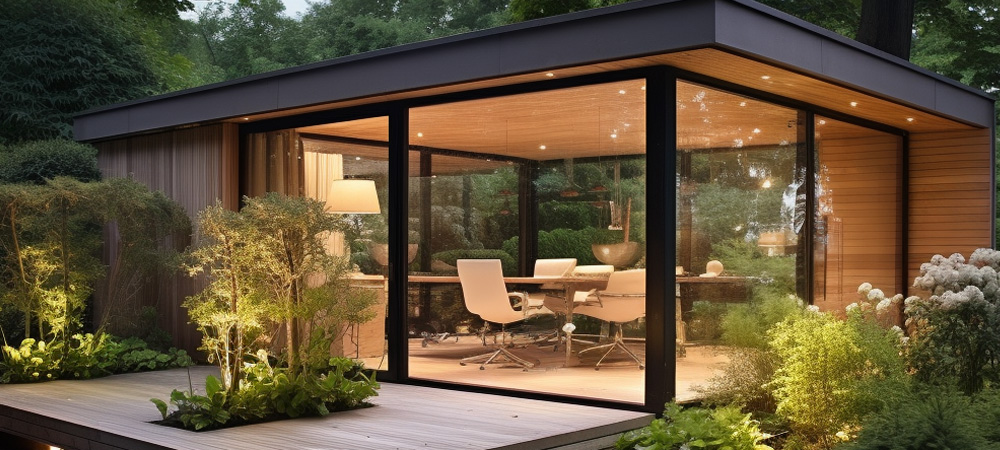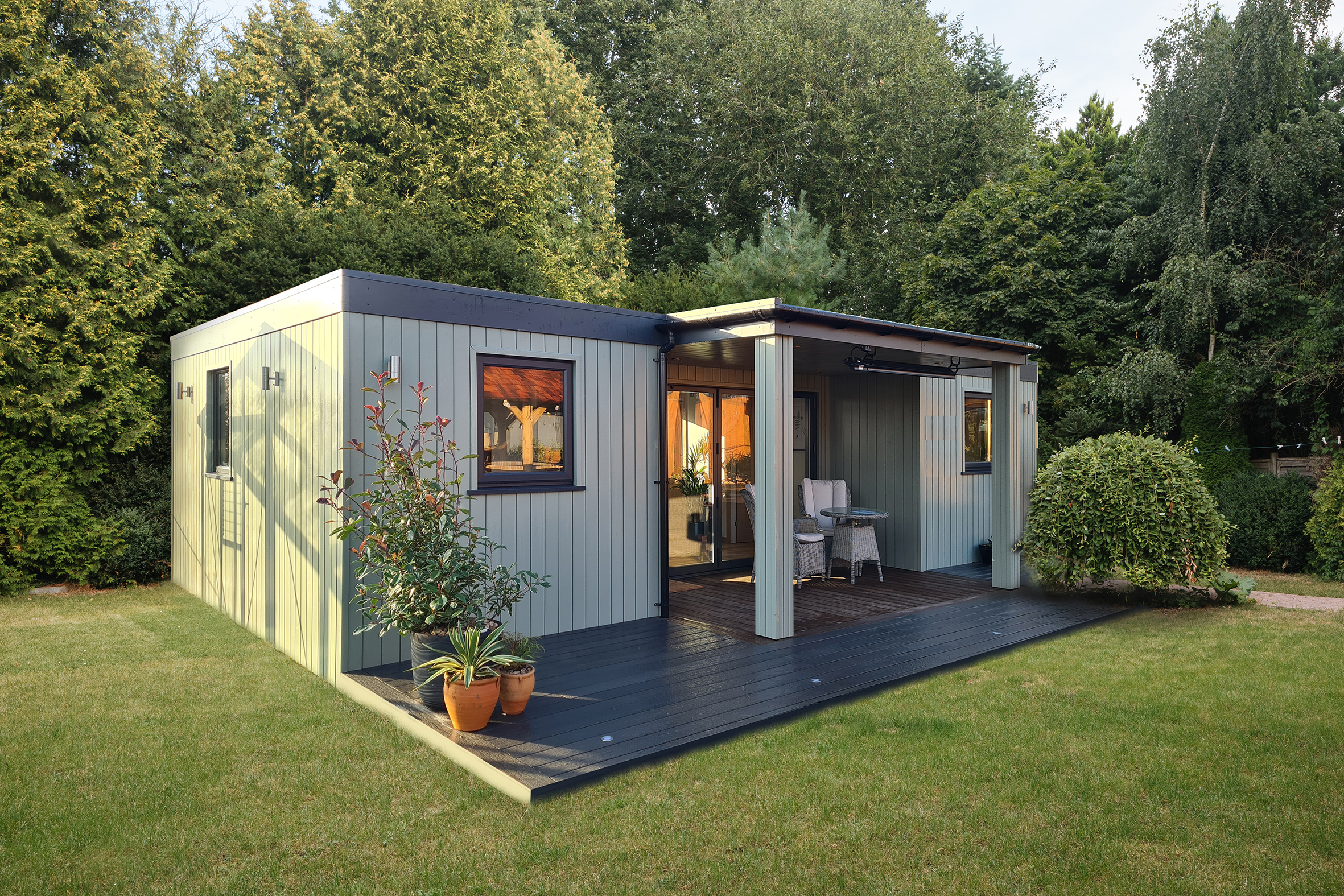What Type Of Planning Permit Would You Need To Build A Garden Room Such As To Deal With Highway Issues?
If you are considering building gardens, conservatories, and outhouses, as well as extensions or gardens offices, traffic concerns are a factor to consider the need for planning permission. Here are some important considerations. The visibility and sight lines:
A planning permit is required if a new structure interferes with the visibility of drivers entering and leaving the property. It can also alter the visibility of drivers at bends and junctions. The authorities for planning will assess whether the structure creates a risk to road safety.
Proximity to Highways:
Planning permission is generally required for structures constructed near the highway. For example front garden rooms, extensions along the street or even extensions in the street. To ensure that the construction doesn't interfere with road safety, there are distance regulations.
Access and Egress
Planning permission is needed for any changes to points of access. This is for the purpose of creating new driveways, or changing the existing ones to allow for an entirely new design. The egress and access points should be secure to prevent the disruption of traffic.
Parking Provision:
If the new structure will alter existing parking spaces or will require parking for additional vehicles the planning permit is required. The planning authority will determine if the development offers enough parking and doesn't create congestion on the streets.
Traffic Generation
Developments that are expected to create an increase in traffic, for example gardens designed for business use with visitors, require planning permission. The traffic levels within the region and road safety is assessed.
Effect on Pedestrian Access
Planning permission is required when the proposed structure encroaches on the pavements or walkways for pedestrians. It is essential for pedestrians to be able to get to the area and remain protected.
Construction Impact on Highways
The effects of construction work on highways, which includes the movement of heavy vehicles and temporary obstructions, may require planning permission. The planning authorities can set the conditions in order to minimise disruptions to the road network.
Drainage and water runoff
The effect of a new development on drainage, water runoff and the highway is also an important aspect to take into consideration. Planning permission ensures the new structure will not exacerbate any flooding or drainage issues which could impact the highway.
Street Furniture and Utilities
Planning permission is required when the proposed construction will affect street furniture, underground utilities or both (e.g. water cables, pipes, etc.). The planning authority will work with relevant agencies to address these concerns.
Compliance with Highway Authority Guidelines:
Local highway authorities will have their own set of guidelines and requirements regarding developments in close the vicinity of highways. Planning permits ensure that the regulations are followed to maintain road safety.
Noise and disturbances caused by traffic
If the new structure could cause noise disturbance or disruption to traffic (e.g. garden offices that are visited or receive deliveries) the planning permission will need to be sought to evaluate these effects and then to reduce the impact.
Accessibility to Public Transport
Planning permits are required for any development that could affect accessibility of public transport facilities, such as train or bus stations. Effects on users of public transport as well as integration into the transport system is taken into account.
In short, highways issues are an important element in the planning process for conservatories, garden rooms outhouses, garden offices, or extensions. The proposed development must not negatively impact on the safety of roads and pedestrian accessibility or the infrastructure. Talking with your local authority for planning and the highway authority at the beginning of the process of planning can assist in addressing these issues and help ensure that the development is in compliance with all relevant laws. Follow the best what's a garden room for blog recommendations including outhouse, gym outhouse, garden rooms in St Albans, best electric heater for cabin, garden rooms near me, costco garden buildings, 4m x 4m garden room, Tring garden rooms, garden room conservatory, garden room heater and more.

What Is The Planning Permission Required For Garden Rooms Etc.?
Building gardenrooms or outhouses, conservatories and other garden spaces along with garden offices or extensions on the grounds of listed buildings requires special considerations. Stricter regulations also apply. The following are key considerations when planning such projects.
Generally, every extension, alteration, or construction project that is carried out within the boundaries of a building that is protected requires listed building approval in addition planning permission. It is vital to be aware that changes may affect the distinctive character of a listed property.
Impact on Historic Character
This includes garden rooms and outbuildings. This includes garden buildings and outbuildings.
Materials and Design:
The style of a new structure must be compatible with the architectural and historic significance of a listed structure. It is possible that this would need the use and layout of traditional materials. This will also require approval for planning.
Distance from the listed Building
New constructions built near a listed building will be scrutinized for the effect they can have on its surroundings and appearance. If they are to not alter the character of the building, planning permission will need to be obtained.
Scale and size:
The extension, garden room, or conservatory should be proportional and harmonious with the existing listed building. More substantial structures will require detailed planning and assessment.
The Property Location:
Planning permissions can be affected by the position of a building, regardless of whether it is front, on the side, or in the rear of a listed structure. Locations that are visible from the street or that affect the main views of a building usually come under greater scrutinization.
Changes within the organization
Even if you're removing the old structure, all internal changes that will be built should be approved by the planning department and have approved building permits.
Conservation Area Overlap
The listed building must be located in a Conservation Area. Planning permission is required in order to make sure that the conservation zone and listed building regulations are adhered to.
Building use:
Planning permission is often needed in relation to the intended use of the garden room or outbuildings, may have. The design of a garden room or outbuilding which implies a significant modification to the property such as a residential apartment or commercial space, could be subject to greater examination.
Structural Impact:
Any construction that could alter the structural integrity listed buildings require approval for planning and listed-building permission. This ensures that the old and new structures can be safely incorporated.
Local Authority Guidelines
Local authorities will often provide specific guidelines for listed buildings which outline the types of construction and modifications that can be permitted. These guidelines can only be implemented with permission from the planning department.
Professional Assessments
Conservation experts typically conduct thorough reviews of proposals for works to be completed on listed building. These assessments assess the suitability and support of the proposed modifications.
To summarise, planning consent and listed building approvals are usually required when building gardenrooms, conservatories outhouses, office buildings or extensions with the designated building. Get in touch with your local planner and heritage experts at the beginning of the planning process to ensure compliance with all relevant regulations, and to ensure the preservation of the architectural and historical integrity. View the most popular kitchen garden room extension for site info including small garden office, garden outhouses, garden out house, best heater for log cabin, garden room permitted development, garden room planning permission, garden office hertfordshire, 4m x 4m garden room, herts garden rooms, outhouse garden rooms and more.

What Type Of Permit Do I Need To Build A Garden For Instance?
When deciding if you want to apply for planning permission for gardens rooms, conservatories and outhouses and also extension or garden offices it is essential to consider the design of the building. These are the most important considerations:
If the proposed structure falls within the development rights that are permitted of your property, planning permission may not be required. There are a few aesthetic and design criteria which must be met.
Dimension and scale:
The new structure's size and scale must be in proportion to the property's size and other buildings. The size of the new structure must be in proportion to the existing property and surrounding buildings.
Height and Mass:
The mass and height of the new structure must be in line with the size of the property as well as adjacent buildings. Planning permission is typically needed for buildings that are over the height limit or are incompatible to the size of the property.
Materials and Finish:
The selection of materials and finish should complement the current property and adjacent buildings. It may be necessary to obtain planning permission if materials are not compatible with the style and design of the space.
Design Harmony
The style of the new structure should be compatible with the architecture of the current property and surrounding buildings. The style of the new structure should be in harmony with local character and style.
Roof Design:
The roof's design must be harmonious with the structure of the building you're working on and the buildings around it. Planning permission might be required if the roof design is not line with the local style and style.
Fenestration, Windows and Doors:
The design and placement of doors and windows should be sympathetic to the existing property and surrounding buildings. The proposed fenestration could need planning approval if it is not compatible with the local character and look.
Treatment of Facades
The facade's treatment should be in harmony with the existing property and surrounding buildings. If the proposed treatment of the facade isn't in line with the local character or appearance it is possible that planning approval will be required.
Landscaping & Surroundings
The landscaping surrounding the structure must be in harmony with the existing property and building. Planning permission might be required if the proposed landscaping isn't in line with the local character and appearance.
Visual Impact:
The visual impact of the structure on the area surrounding it is to be reduced. If the proposed structure will have a negative visual effect on the surroundings, then planning permission may be required.
Heritage and Conservation Areas
It is possible that tighter aesthetic and design requirements may apply if your property is situated within the conservation zone or a heritage area. A permit for planning could be required for the construction of an structure that meets the requirements.
Architecture and Guidelines for Planning
Local planning authorities often issue guidelines for aesthetics and design. Planning permission may be required if the proposed building isn't in accordance with these guidelines.
Planning permission is often dependent on the appearance and design of the structure. This can include gardens, conservatories and outhouses. It is essential to talk with your local planning authority at the beginning of the planning process to ensure that the structure is keeping with local character and aesthetic guidelines, and to determine if planning permission is required. See the best what is a garden room uk for blog tips including outhouse buildings, how to get power to a garden room, garden room planning permission, garden room vs extension, costco garden office, garden room planning permission, outhouse for garden, what size garden room without planning permission uk, outhouse garden rooms, Tring garden rooms and more.

Comments on “Good Suggestions On Planning Permission For Garden Conservatories”